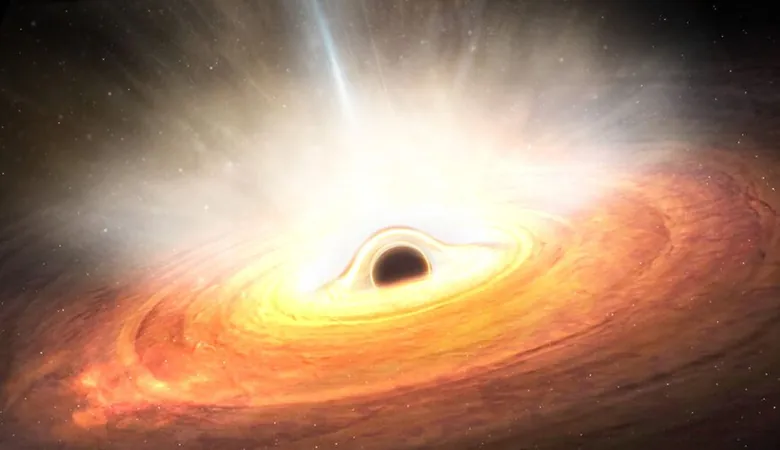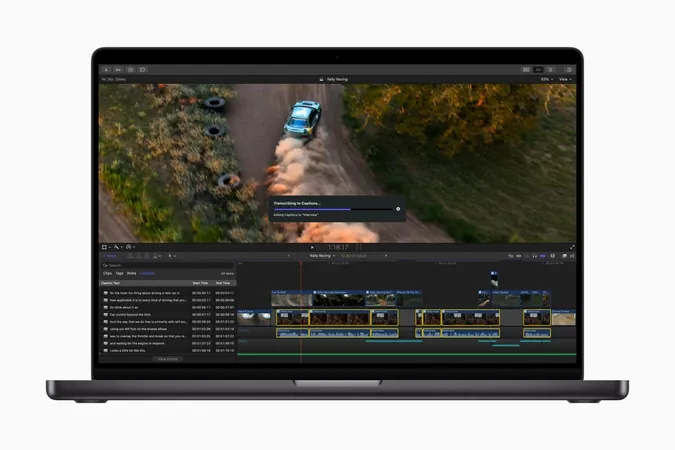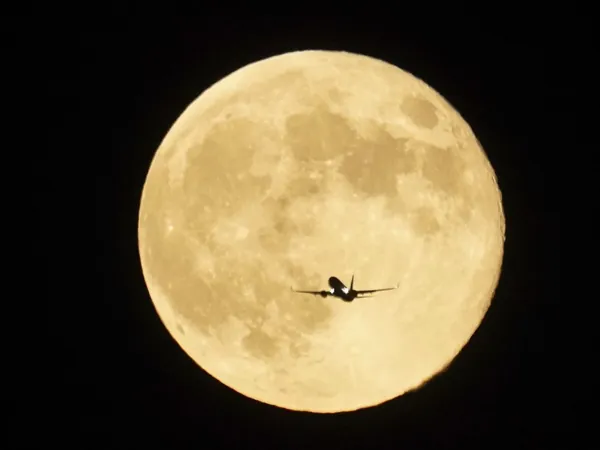
The Astonishing Early Existence of Supermassive Black Holes: Did They Have a Head Start?
2024-11-11
Author: Charlotte
Introduction
Supermassive black holes (SMBHs) are cosmic giants, boasting masses that can reach billions of times that of our Sun. They reside at the heart of nearly all large galaxies, but recent discoveries from the James Webb Space Telescope (JWST) have turned our understanding of their origins upside down. This remarkable telescope has peered deep into the past, capturing images of ancient galaxies less than a billion years after the Big Bang, revealing SMBHs that were unexpectedly massive and challenging existing scientific frameworks.
The Challenge of Understanding SMBH Formation
The crucial question we must now confront is: how did these colossal black holes achieve such immense sizes so early in the universe's history?
Understanding black holes is inherently complex. While we know that massive stars can collapse under their own gravity to form stellar-mass black holes, the theory of SMBH formation has remained murky. The common assumption is that these supermassive entities grew by merging with other black holes as galaxies conjoined. However, the JWST’s findings complicate this narrative. It has detected quasars fueled by black holes with masses ranging from 1 to 10 billion solar masses merely 700 million years after the Big Bang. This suggests that there wasn't enough time in the primordial universe for SMBHs to form through conventional merging processes.
A Groundbreaking Hypothesis by Francesco Ziparo
New research led by Francesco Ziparo from the Scuola Normale Superiore di Pisa proposes a groundbreaking hypothesis to explain the rapid growth of SMBHs in the early cosmos. This study introduces the notion of primordial black holes (PBHs) as potential seeds for the early formation of SMBHs.
Primordial black holes, theoretically formed from the high densities of subatomic particles shortly after the Big Bang—before the appearance of the first stars—could provide insight into the missing link between stellar-mass black holes and the titanic SMBHs we observe today. Unlike stellar-mass black holes, which are constrained to a relatively narrow mass range, PBHs could vary widely in mass.
The Role of PBHs in Early Universe
Ziparo and his team propose that PBHs clustered in the nascent dark matter halos of the early universe, where they became pivotal in the accretion of baryonic matter and the formation of dense cores. They suggest that these primordial seeds, if appropriately timed, could lead to the massive black holes detected by JWST. Their hypothesis emphasizes the significance of factors such as PBH accretion, the dynamics of dark matter, and the interactions of gas within these halos.
Testing the Hypothesis
Excitingly, the researchers indicate that their model can also be tested. They anticipate that during the formation of these primordial black hole seeds, mergers between PBHs would generate substantial gravitational waves. These phenomena could be observed with the proposed Einstein Telescope—an advanced gravitational wave observatory poised to revolutionize our understanding of black holes and the universe’s evolution.
The Future of Black Hole Research
The future availability of data from the Einstein Telescope, which aims to have arms that extend 10 km compared to LIGO's 4 km, could provide deeper insights into the genesis and growth of black holes, allowing scientists to examine the universe's history through gravitational waves.
Conclusion
As we grapple with these new revelations about supermassive black holes, it becomes clear that their role in shaping the cosmos is profound, influencing the distribution of matter on a vast scale. The earlier-than-anticipated emergence of these colossal entities signifies that the journey to fully comprehend them has just begun, unlocking a treasure trove of mysteries regarding the universe's evolution and the origins of its structures.
Could we be on the verge of rewriting our understanding of black hole formation? Only time, and further research, will tell. Stay tuned as we delve deeper into this cosmic puzzle!









 Brasil (PT)
Brasil (PT)
 Canada (EN)
Canada (EN)
 Chile (ES)
Chile (ES)
 España (ES)
España (ES)
 France (FR)
France (FR)
 Hong Kong (EN)
Hong Kong (EN)
 Italia (IT)
Italia (IT)
 日本 (JA)
日本 (JA)
 Magyarország (HU)
Magyarország (HU)
 Norge (NO)
Norge (NO)
 Polska (PL)
Polska (PL)
 Schweiz (DE)
Schweiz (DE)
 Singapore (EN)
Singapore (EN)
 Sverige (SV)
Sverige (SV)
 Suomi (FI)
Suomi (FI)
 Türkiye (TR)
Türkiye (TR)